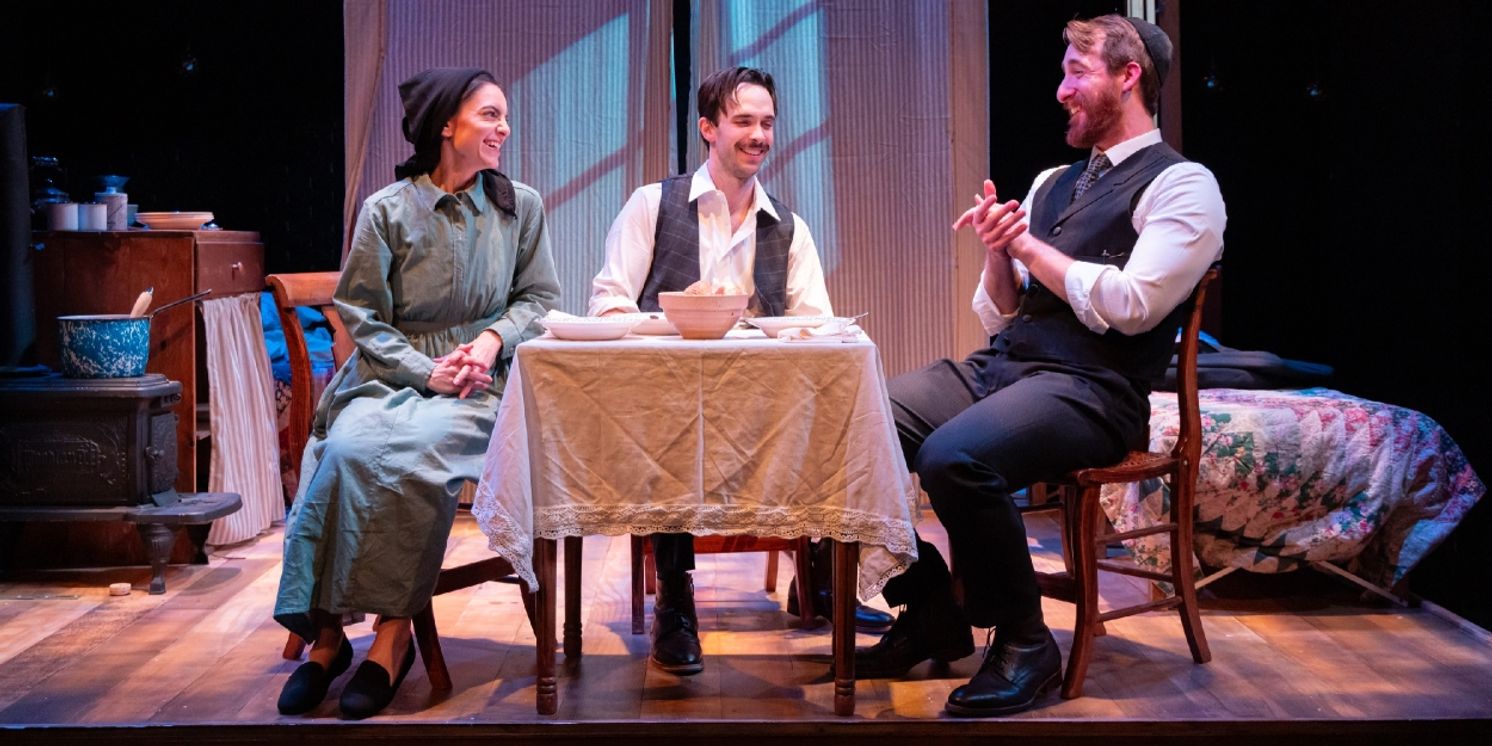Review: HESTER STREET At Theater J
The world première production, directed by Oliver Butler, runs through April 21.

Hester Street abides. It's what New Yorkers call a "cross" street, and it continues to run from east to west, south of Little Italy, north of Chinatown. But its name endures to represent the entire enclave on Manhattan's lower east side where Jewish immigrants from Eastern Europe and Russia found places to work and live during the last half of the 19th century into the first few decades of the 20th. In 1975, a Jewish woman and Sarah Lawrence graduate (from Omaha, Nebraska) adapted Abraham Cahan's 1896 novel into a film about the neighborhood and its people. Joan Micklin Silver's Hester Street has now itself been adapted for the stage by Sharyn Rothstein; its world première production, directed by Oliver Butler, runs through April 21.
The ghetto around Hester Street was crowded; people slept too-many to a room. So it's somehow fitting that Hester Street's first production is on a small stage in a theatre with little backstage. Wilson Chin's rotating set design, a work of genius, solves this by putting an entire, tiny, two-room flat complete with stove and front door onto an unseen turntable. By circling the square, Chin enables Butler's cast to be onstage and offstage simultaneously. And Butler uses every inch of space quite well and isn't afraid to spill his actors over into the audience's space for a few "outdoor" scenes, because, well, baseball. Frank Labovitz's costumes reflect the shapes of 1900 and the modesty of both the men and women in that period: there are charming buttons, belts, and choices of fabric for the women, vests for every man, and hats for everyone. Chin includes the clotheslines often suspended across city streets in the Lower East Side, another ingenious touch, because the laundry doubles as one of the screens for the English surtitles necessary because part of what Hester Street is about is language. The residents of the Lower East Side came from Russia, Poland, Ukraine, Lithuania, and elsewhere and arrived knowing little or no English; but they communicated with each other in a unifying secret weapon, their common language, Yiddish. And that made assimilation easier; resistance was futile.
Rothstein wisely remains faithful to both Silver and Cahan (who founded the Yiddish-language newspaper, The Jewish Daily Forward in New York in 1897) in making the struggle to Americanize central to Hester Street. The outstanding cast reveal the conflicts embedded in moving to another country. Hester Street tells the story of how immigrants parse the culture of their new country and figure out how to adapt while also figuring out what elements of their old country they will keep. Jake Horowitz plays Jake who has shaved his beard and changed his name from Yankl to begin his self-Americanization. He sews clothing in a sweat shop all day and enjoys social dancing in the evening along with enjoying popularity with the ladies in general and Mamie Fein in particular (Eden Epstein). She's much more interested in marrying Jake than he seems to be, and the reason why becomes clear when the wife and son that Yankl left in the old country arrive on Hester Street. Complicating the situation further, Jake's boarder, Bernstein (Michael Perrie, Jr.) sticks to studying Torah in his spare time. Jake's wife Gitl (Sara Kapner) thus spends more time with Bernstein than with Jake, whose new ways conflict with her determination to keep house the only way she knows how: like a peasant in a rural Russian shtetl. It will be the neighbor down the hall, Mrs. Kavarsky, who will facilitate the resolution of these marital and cultural tensions. As portrayed by old soul, Dani Stoller, Mrs. Kavarsky redeems the stereotypical yente character by forcefully revealing this yente's ability to fix the world for good. Cahan describes Mrs. Kavarsky as "a middle-aged woman," and Doris Roberts was 50 when she played her in the film Hester Street, 20 years before becoming Raymond's mother. Stoller, who HAS to still be in her thirties, just plain has the talent and the acting technique to disappear those facts.
Horowitz, Perrie, Epstein, and Kapner shine too. Horowitz's Jake, coltish and hyper when flirting with Mamie or playing with his son, turns pained and reflective when no one can see him. Epstein, whose Mamie is adversarial but never evil toward both Jake and Gitl, modulates Mamie with an ethical strength that will mature well past flirtatiousness. Perrie's Bernstein balances his character's committment to keep his orthodox faith with a fully liberal attitude toward American peculiarities. 2024 starves for such a mensch. Kapner's Gitl must change more than any character in Hester Street, and Kapner seamlessly creates this evolution from shy and old fashioned villager to modern, self-reliant, American woman.
Billed as a play with original music and songs by Joel Waggoner, these are the least successful elements of Hester Street. Some of Waggoner's incidental music complements the action as did William Bolcom's ragtimey score for the 1975 film. But more often, Waggoner's songs interrupt the play rather than integrate music into it. Except for a few klezmer-inflected phrases, the songs fit no particular style. They repeat themselves so insistently that the lack of economy really just lengthens the production without enhancing it. More's the pity, because three fine musicians perform them; Morgan Morse plays a lively accordion, and Lauren Jeanne Thomas' violin is superb.
Theatregoers with DC Public Library Cards should know that they can screen Joan Micklin Silver's black and white Hester Street for free via the library's Kanopy streaming service. Theatre J's version, which runs longer than its announced 2½ hours, is in glorious, living, really well-acted color.
(Photo by Ryan Maxwell Photography)
Reader Reviews
Videos

